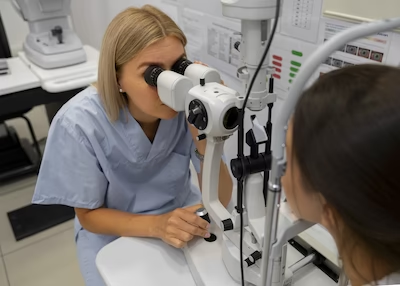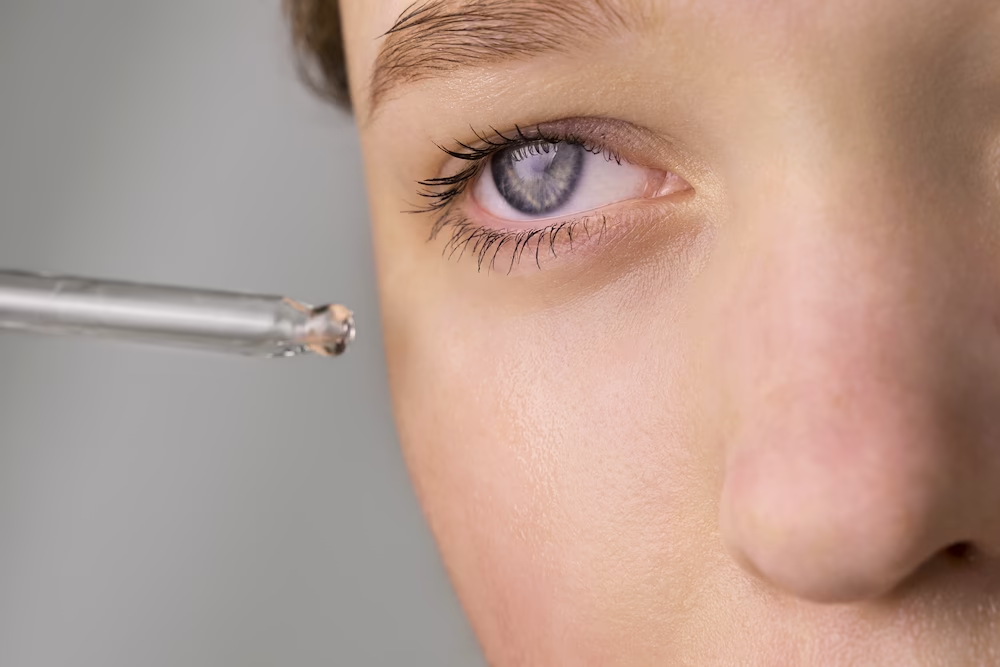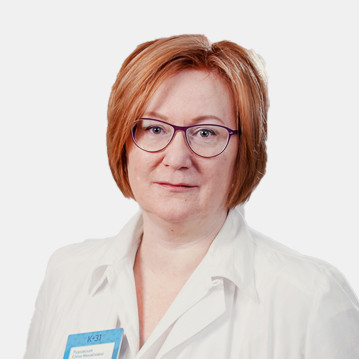Cataract Treatment

specialists

equipment

treatment

Types of cataracts
Cataracts can be congenital and acquired. Congenital cataracts can be hereditary and occur due to intrauterine pathology. In the case of congenital cataracts, most often we are talking about the presence of various diseases in a pregnant woman: hypocalcemia, hypothyroidism, diabetes mellitus, toxoplasmosis, viral infections (rubella).
The most common form of acquired cataract is age-related cataract, which usually occurs in people over 50 years of age.
The development of acquired cataracts, which require removal, is facilitated by some systemic diseases in combination with individual characteristics of the body: diabetes mellitus type 1 or 2, myotonic dystrophy, atopic dermatitis, neurofibromatosis type II.
Various eye diseases (uveitis, glaucoma, eye injuries, retinal detachment, some hereditary retinal dystrophies) lead to the development of secondary cataracts. Also, treatment of secondary cataracts may be required after lens replacement. As a rule, this is due to the persistence of factors that provoke the development of the disease.
There are several stages of lens opacity:
- Initial
- Immature
- Mature
- Overripe
Treatment of initial cataracts involves prescribing eye drops. They improve metabolic processes in the lens and help slow down progression. In most cases, this disease already requires surgical intervention at the initial stages. This is due to the fact that vision restoration is possible only after surgical treatment. Since medications are not able to restore transparency to a clouded lens.
The earlier surgical treatment of cataracts is performed, the lower the chances of developing severe, concomitant pathologies. In each situation, the doctor makes a decision based on the individual indications of the patient.
Diagnosis and treatment of cataracts

Determining in the tactics of patient management and treatment of cataract of the eye is visual acuity. The degree of maturity, massiveness of the cataract are determined by biomicroscopy. Sometimes, to get a more complete picture of the state of the eye membranes with intense cataract, an ultrasound examination of the eyeball is necessary. Our clinic has everything necessary to make a diagnosis - cataract of the eye.
In children, complications caused by cataracts are very important in assessing the severity of the disease: obscuration amblyopia (impaired development of visual functions in a child due to limited light entering the eye), nystagmus (involuntary movements of the eyeballs), strabismus.
The only effective way to combat cataracts is surgical. Taking into account the peculiarities of the development of the disease, the doctor and the patient decide on the need, timing and methods of cataract treatment. The operation is performed under local anesthesia and does not take much time. Moreover, due to the use of a modern femtosecond laser in surgery, in most cases there is no need for suturing, which slows down rehabilitation. The installation of intraocular lenses (IOL) is the best solution in the treatment of cataracts.
The natural lens is replaced with an artificial one. The following types of lenses are used in the work:
- Multifocal or multifocus, trifocal. They can change the optical power of the eye, adjusting to work at different distances, just like the natural lens. This parameter is considered their main advantage. A good example of multifocal lenses is Alcon
- Monofocal. The classic option, most often used for cataract surgery in the elderly at a bargain price. After removal and replacement, the patient sees well into the distance, and uses weak glasses for near vision (it is also possible to resort to spectacle correction for distance). Monofocal lenses are presented in the lines of manufacturers Tecnis, Alcon, Zeiss and others.
- Toric. Suitable not only for laser treatment of cataracts, but also for simultaneous correction of severe astigmatism
After any operation, patients are given a memo with recommendations for the rehabilitation period. The doctor conducts an examination according to the schedule, monitoring the recovery. In the clinics "K + 31" you can also perform laser vision correction. Feedback from our satisfied patients indicates the high qualifications of doctors and the excellent effectiveness of the treatment.

This award is given to clinics with the highest ratings according to user ratings, a large number of requests from this site, and in the absence of critical violations.

This award is given to clinics with the highest ratings according to user ratings. It means that the place is known, loved, and definitely worth visiting.

The ProDoctors portal collected 500 thousand reviews, compiled a rating of doctors based on them and awarded the best. We are proud that our doctors are among those awarded.
Make an appointment at a convenient time on the nearest date
Price
Other services















About the disease
Contrary to popular belief, cataracts are diagnosed not only in elderly patients, when the disease is caused by natural age-related changes. Untimely correction of other eye pathologies, injuries, taking certain medications, poor environmental conditions, exposure to radiation and other factors can lead to the development of pathology. Ophthalmic surgeons at our center have also encountered congenital cataracts in children.
Modern ophthalmological equipment, extensive experience and work experience of top-category doctors allow them to perform high-quality operations to remove cataracts and restore vision to patients. We can also solve problems associated with myopia, astigmatism, glaucoma, hyperopia.
To make an appointment, you can order a call back and leave a request using the form on the website. We will select a convenient time for visiting an ophthalmologist, use effective methods of treating cataracts in Moscow and will definitely solve your problem.